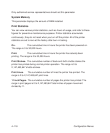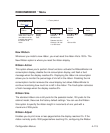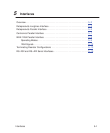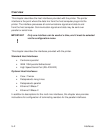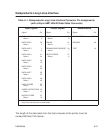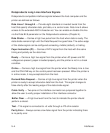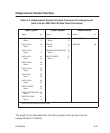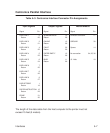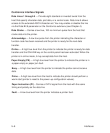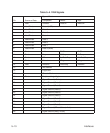5–4 Interfaces
Dataproducts Long Lines Interface Signals
Dataproducts-compatible interface signals between the host computer and the
printer are defined as follows:
Data Lines 1 through 8 — Provide eight standard or inverted levels from the
host that specify character data, plot data, or a control code. Data Line 8 allows
access to the extended ASCII character set. You can enable or disable this line
via the Data Bit 8 parameter on the Dataproducts submenu (Chapter 4).
Data Strobe — Carries a high true pulse from the host when data is ready. The
data strobe remains high until the Data Request line goes false. The active edge
of the strobe signal can be configured as leading, middle (default), or trailing.
Paper Instruction (PI) — Carries a DVFU signal from the host with the same
timing and polarity as the data lines.
Ready — Carries a high true signal from the printer when AC power and DC
voltages are present, paper is loaded properly, and the printer is not in a check
condition.
Online — Carries a high true signal from the printer when the Ready Line is true
and the ON LINE key on the control panel has been pressed. When the printer is
in online mode, it may accept data from the host.
Demand/Data Request — Carries a high true signal from the printer when the
printer is ready to accept character data from the host. This signal changes to
false shortly after the leading edge of the data strobe signal.
Cable Verify — Two pins on the interface connector are jumpered together to
allow the user to verify proper installation of the interface connector.
Buffer Clear — A high true level from the host to indicate the printer should
perform a reboot.
Test – This signal is connected to +5 volts through a 470 ohm resistor.
Parity Error
– Always carries a low false signal from the printer indicating there
is no parity error.



